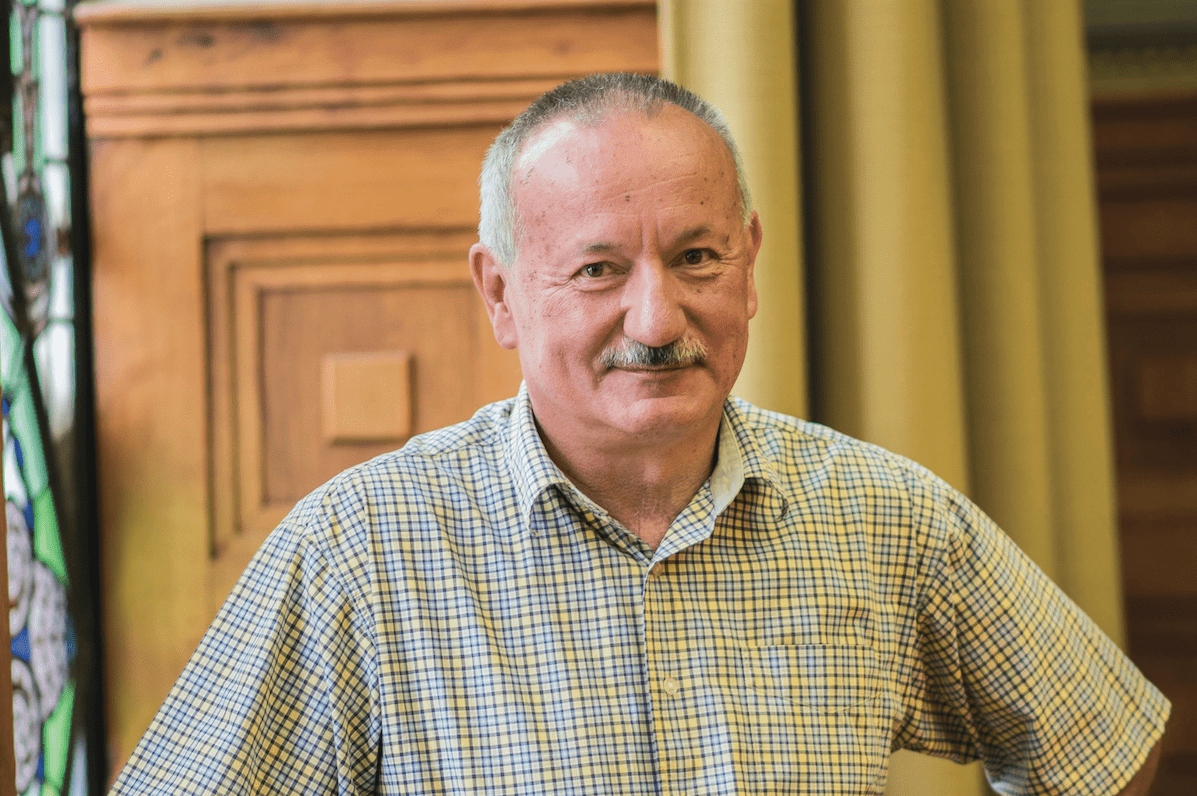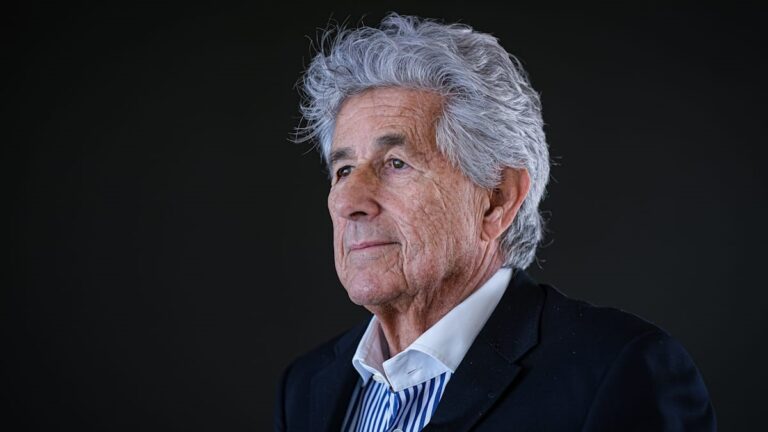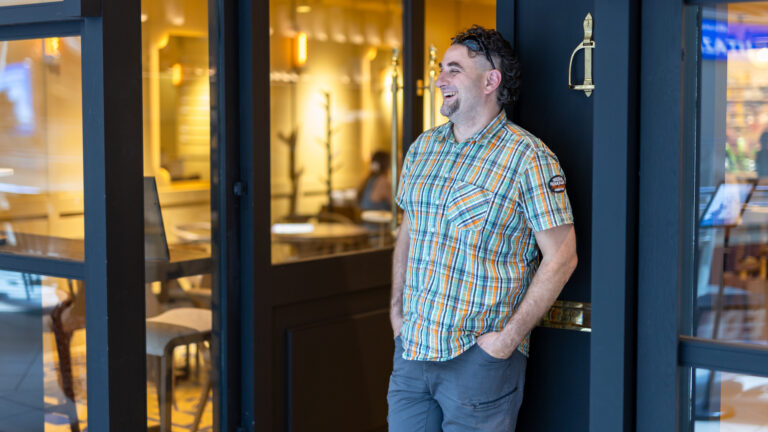This article was published in Vol. 2 No. 4 of the print edition
Professor Attila Miseta Interviewed by András Jancsó
An article was recently published in the magazine Times Higher Education on the strategy of the University of Pécs Medical School with the flattering title ‘University of Pécs: Central Europe’s Most Modern Medical and Engineering Science Centre’. Professor Attila Miseta, the rector of the university, was interviewed by András Jancsó.
What exactly is your strategy, which was also praised by Times Higher Education? And how is it aligned with the long-term vision of the university?
The Medical School of the University of Pécs (PTE) is one of the oldest medical training institutions in Hungary. A regional knowledgebase, it is currently attended by more than 3,500 students from 65 countries, who attend Hungarian-, English-, and German-language programmes offering general practitioner and dentist training, master’s courses in biotechnology, as well as PhD and specialist courses in 33 medical specialties. The majority of our foreign students attend the Medical School; the degree they can obtain here is valued in many countries, which ensures a wide range of opportunities for them. The mission of our School is to provide our students with teaching of the highest possible quality, and to train valuable physicians and researchers. Our efforts are effectively supported by our complex, forward-looking strategy called PotePillars, which has been launched in order to increase our competitiveness, to improve the quality of tutoring, and to build our community. Its pillars, the Culture of Learning concept, the Constructed Environment concept, the Science and Innovation concept, and the Well-Being concept, are organically connected, and define the directions of development for the future. We formulate common goals based on them, and work on their implementation together as a community.
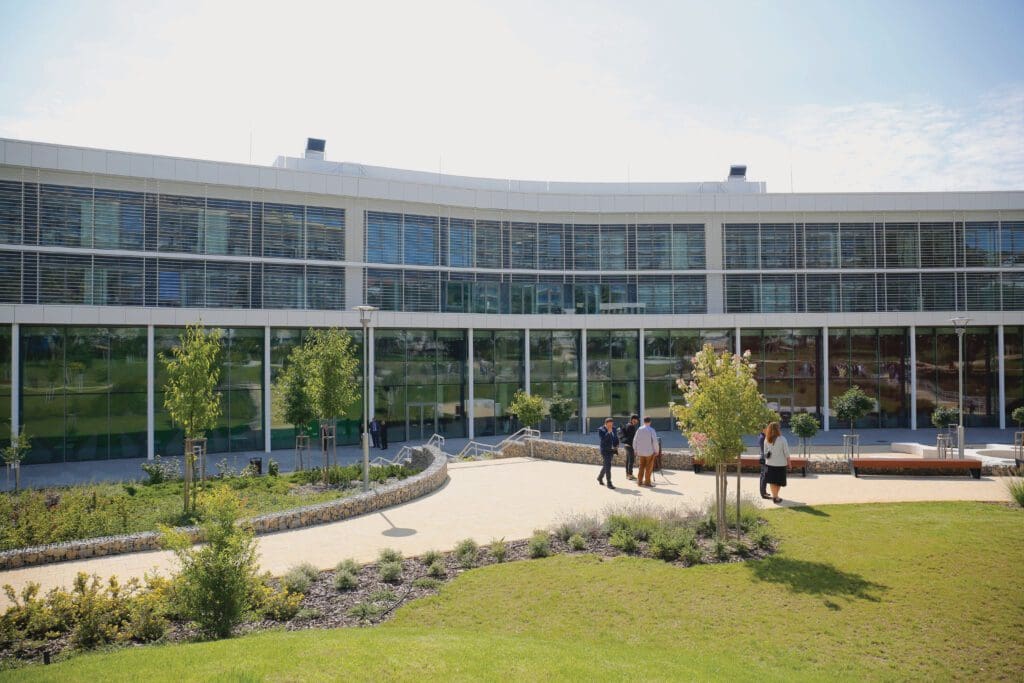
In addition to spectacular infrastructural developments—including a new building for the teaching of theoretical subjects, the dentistry block, which will soon be handed over, the animal house, the super-high resolution microscope lab, and the skill lab—and the establishment of a study culture tailored to the Medical School, we also strive to build communities within the School, and to ensure their well-being. Our School has set itself the objective of creating for our students, tutors, and all other staff an environment that is satisfying in every respect, thereby reinforcing the School’s organizational immune system as well. To support this, a number of health-preserving and well-being-enhancing programmes are offered to our faculty members and students, and the preservation of mental health is also ensured via consultation and coaching opportunities. An institution—whether a faculty or an entire university—that is being built by effectively functioning communities is an institution of and for the future, as it is the communities which fill it with life and serve as the foundation for its further development.
Our multifaceted development and innovative community-centred approach is an integral part of the strategy of the University of Pécs.
As one of the oldest universities in Europe, PTE intends to assume an extensive role in the intellectual, welfare-related, and economic development of the regions in its catchment area, and its top priority is to strengthen university-focused innovation and research-and-development efforts in the interest of enhancing citizens’ standard of living. Our Medical School is also part of this all-encompassing vision of the future, requiring continuous progress and aspiring to constant renewal, in line with our strategy, and exploiting the strength of our communities.
You mentioned the new ‘theoretical block’, inaugurated in September 2021, in the shadow of the COVID pandemic. Have you received feedback on the value of this development effort from the ‘end-users’, that is, professors and students?
Both students and professors were happy to occupy the twelve-thousand-square-metre, ultramodern theoretical block handed over last autumn, in which four institutes, the Institute of Public Health, the Institute of Physiology, the Institute of Translational Medicine, and the Institute of Pharmacology and Pharmacotherapy are housed. All kinds of twenty-first-century requirements—education supported by info- communication tools, a training environment built on state-of-the-art technologies, problem-oriented tutoring engaging students in the actual challenges of research, or quality spaces for extracurricular activities—have been fully met by the new facility. Its four large lecture halls and thirty-four seminar rooms satisfy the highest needs of education and study, including info-communication-supported tutoring.
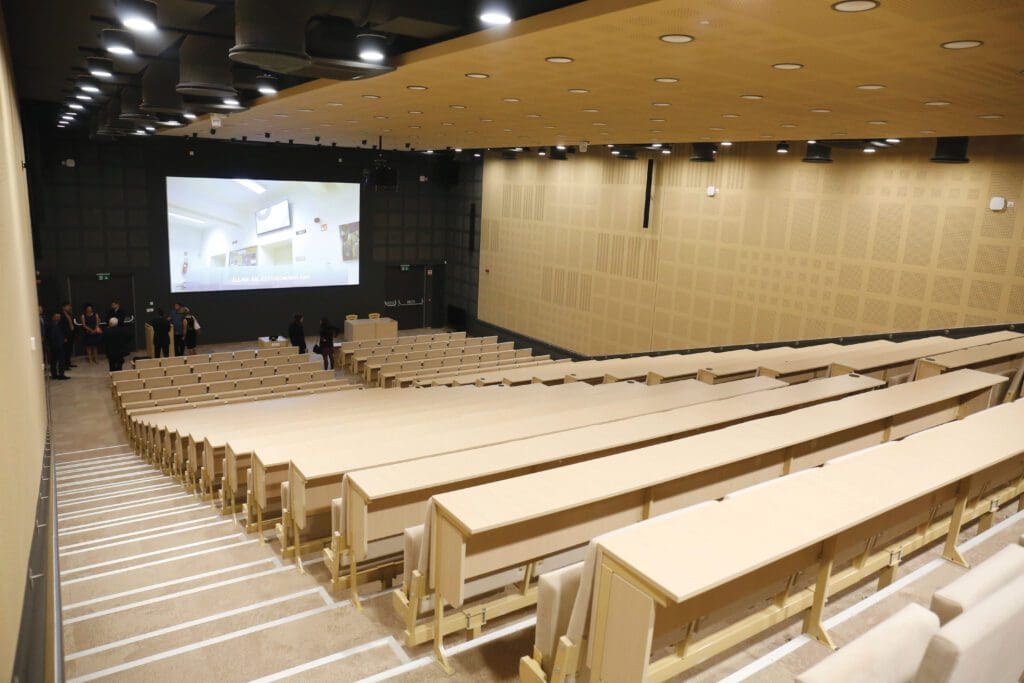
The building also has so-called Core Facility spaces for the shared use of the institutes, implemented in line with the principle of ‘lab within the lab’, satisfying the highest requirements of medical research. During the design process, communal spaces used by students received extra attention. Comfortable armchairs and boxes were installed on the ground floor and on the first floor as well, to make it possible for future physicians and dentists to spend time between classes in a comfortable environment, allowing them to sit together for a chat or to continue studying into the night, whenever they have to do so. A new restaurant and a new café were also opened in the new block, offering a colourful international menu to students and staff. Citizens of the Medical School can also take a pleasant walk in the ten-thousand-square-metre park created next to the new building, featuring various plants, modern paving, outdoor furniture, and a pond. In the spirit of the Green University programme promoting environmental protection, students’ convenience is also served by a newly installed state-of-the-art bicycle storage facility for 160 bikes.
Several development projects are ongoing at the university, applying the most modern VR and AI technologies. Which developments would you highlight as unique both domestically and internationally?
Regarding the field of Artificial Intelligence, one of the most exciting sub-fields we are involved in is the ‘Ember Arm’ [Human Arm] project, developing a motorized myoelectric upper limb prosthesis using 3D design. This device learns, with the help of its AI-based software, the user’s moves, and so it can be tailored to the individual using it. Learning and practicing moves can also take place in virtual space, in virtual reality, so the project is also linked to VR.
In the field of VR, the PTE MIK–BIM Skills Lab research team has commenced research into novel applications of AR/VR equipment in the construction industry. Two development projects are ongoing at the moment, aimed at enhancing safety at construction sites: the ‘Virtual Danger Zone’ project aims to ensure that attention can be paid to danger zones at actual construction sites with the help of an AR device called MS Hololens2 (e.g. excavation, open trench, freshly poured concrete, edge of slabs on upper levels, etc.). The wearer of the AR device receives a visual and audio signal as feedback if he or she approaches or steps into a virtual danger zone adjacent to the actual physical environment. In the ‘Virtual Work Safety’ project, we simulate work at height using a VR device called HTC Vive PRO. Those wearing it feel as though they have to keep their balance on high scaffolding while performing various construction installations and assembly works. We build the environment to ensure maximum depth perception, so that those who test the device really feel as though they are in danger. To ensure a safer work environment, if users put on fall protection equipment manufactured by the RDI [Research, Development and Innovation] partner, they can understand how much safer it is to wear the mandatory labour safety equipment on the construction site.
Technology is not everything. What kind of talent promotion possibilities and platforms are available at the university?
At our university, nurturing talent has always been an important activity, and is supported at the departmental level as well as by the university as a whole. The 35th National Scientific Students’ Associations Conference in the spring of 2021, for example, was attended by close to 400 of our own students, with almost half of them finishing in first, second, or third place, and many of them receiving special prizes. Based on the decision of the National Council of Scientific Students’ Associations, in the spring of 2023—similarly to 2017, which was the centennial year of higher education in Pécs in the modern era—we will have the opportunity to host three sections of the National Scientific Students’ Associations Conference.
I am convinced that this is due in part to efficient, high-quality talent-promotion efforts at the University of Pécs.
In the autumn of 2021, based on an earlier tradition, we launched the Ildikó Kriszbacher Talent Promotion Programme to give more visibility to our talent nurturing work, and also to promote extracurricular scientific work among students. We would also like to place more emphasis on acknowledging tutors’ efforts. In the framework of this initiative, we started a series of roundtable talks called ‘Talent Nights’ in September 2021, aimed at broadening the horizon of students participating in the programme. We would like to make the PTE Talent Day scheduled for May a special celebration of talent promotion at and by our university.
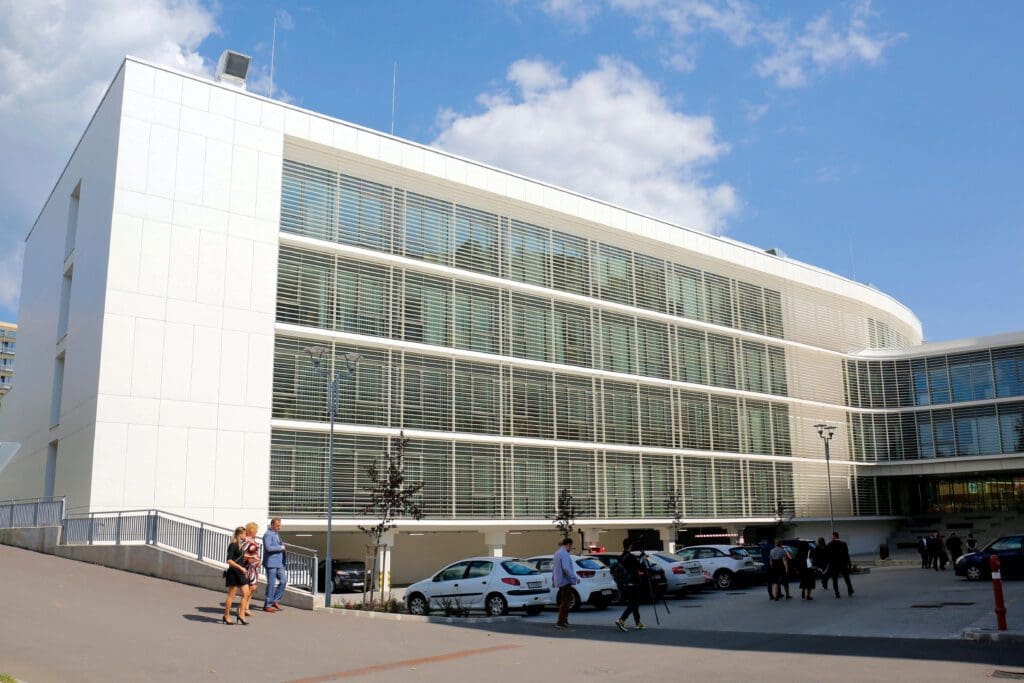
After careful preparation, we have recently signed a framework agreement with Mathias Corvinus Collegium, the most notable talent promotion institution in the Carpathian Basin, which offers new dimensions for both parties in the field of talent promotion. It is widely known that the main institutions of talent promotion are the scientific colleges, of which we have nineteen in operation at PTE—a high number by national standards. Scientific colleges are increasingly attractive among our students, which is clearly demonstrated by the almost ten per cent increase in student numbers last year. The scientific colleges have a broad talent promotion portfolio; they organize conferences and publish students’ papers, among other activities. The János Szentágothai Protestant College, for instance, which operates at our School, organizes the international Szentágothai Multidisciplinary Conference each year. It is to be held for the twentieth time this year. The PTE Sustainable Development Scientific College, recently revitalized, also follows a multidisciplinary approach focusing on the hottest topics of our time, including sustainable development, environmental policy, and development policy. We also take secondary-school talents under our wing, and organize quite a few academic competitions for them. Perhaps the most outstanding of these is the Hungarian Geographical Contest, an English-language competition in the subject of geography, the only event in Hungary where students with the best results can qualify for the annual International Geography Olympiad. I should also mention the Hyperión National Science Fair, which is focussed on Greco–Roman culture, the János Szentágothai Biology Contest, and the Creative History Contest. And the list goes on…
The university joined the currently ongoing restructuring drive in Hungarian higher education, and recently received a new operator replacing the Hungarian state, a foundation called Universitas Quinqueecclesiensis. What does it mean in practice, and how is it manifested in your plans?
The goal of the foundation and the board of trustees is to ensure a suitable operational environment for PTE, which can motivate our teaching staff to perform at a high level. Universities nowadays also have a regional development function, in addition to maintaining and strengthening their high-quality core activities, including tutoring, research, and therapy. Based on our experience so far, the foundation can efficiently contribute to our efforts in this domain. Moreover, it is now possible to be engaged in closer cooperation with the operator, since its registered seat is the university itself. Coordination meetings between the leadership of the university and the operator have become more frequent.
With the physicians’ training programme and the clinical centre, the university has pulled its weight in the fight against the coronavirus. What is your assessment of the performance of the Hungarian healthcare system during the pandemic? And what is the university’s contribution to the future of Hungarian health care?
The Clinical Centre of PTE established the Coronavirus Care Centre (KEK) at the Rákóczi Road site. The Ambulance Unit of the Coronavirus Care Centre receives patients with COVID symptoms, infectious inpatients are treated in the Communicable Diseases Unit, and patients who need intensive care, artificial respiration, or ventilation are tended to at the Intensive Therapy Unit. During the peak periods of the COVID pandemic, close to three hundred patients were treated simultaneously in the Centre. Since March 2020, more than 11,000 COVID cases were treated in inpatient care in the Clinical Centre of PTE. We performed 346,780 PCR tests in total in the course of diagnosing and screening suspicious cases. Protective measures against COVID-19 also included the organizing of vaccinations, at various locations, as required; we offered vaccines at 70 different vaccination points. The number of first, second, third, and fourth vaccines we have administered has exceeded 250,000, and our central vaccination point is still in continual operation. The staff of the Coronavirus Care Centre consists of physicians and specialized personnel delegated by the Clinical Centre. Our colleagues are doing their jobs with professional dedication and high-quality service, despite the tremendous workload. Students at the Medical School and the Faculty of Health Sciences have also been supporting the fight against COVID with their voluntary work, performing various tasks.
The different units of the Clinical Centre took part in several research projects, in close cooperation with the János Szentágothai Research Centre.
For the procurement of special equipment, instruments, and tools required for tending to COVID patients, the Clinical Centre of our university received hundreds of millions offorints from the government via the Operative Task Force. The Hungarian healthcare system performed very efficiently during the COVIDpandemic; while hospital care was problematic in many developed countries due to the lack of a sufficient number of hospital beds, all patients in Hungary had access to hospital beds, respirators, and medical staff. PTE ensures the theoretical and practical expertise of future health professionals by offering high-quality training in Hungarian, English, and German; on-the-job training at the Medical School is provided by the patient care units of the PTE Clinical Centre.
As a university, you not only offer valuable courses for future doctors and lawyers, but you are also active in the field of human and social sciences. How do you see the future of human and social sciences in today’s profit- and technology-oriented world of higher education? What efforts have you been making to ensure the sustainability of studies in the human and social sciences, which constitute the basis of the European academic tradition?
Several courses in human sciences and social sciences have been just as successful as courses in other fields. The totality of the training portfolio of our faculty has been financially cost effective for years, thus we are able to preserve our smaller departments with a lower number of students and our professional research teams who create, maintain, and pass on real cultural values. One of the reasons for the stability of our finances is that we also perform tasks in the public interest in the case of, for example, teacher training and courses offered to minorities, for which we receive resources from the government. The other reason behind it is the continuous increase of our own revenues, which is due, in part, to the growing number of fee-paying Hungarian students and, more importantly, to the fee-paying foreign students who come from sixty different countries, and to the system of grants supporting them. The training and teaching courses in the human and social sciences can be and are being transformed in line with the current needs of society, but all in all, the reason why these departments do have a future is precisely that they are not offering specialist training in a narrow professional area, and they are not producing future employees with competence only in special fields of expertise, but are rather shaping approaches, developing skills, and conveying complex knowledge. Those who are armed with such knowledge can easily stand their ground in a wide array of industries as employees, managers, or entrepreneurs, and find it easier to change jobs or careers, if necessary.
The university has a lot of international students. As the head of the institution, how would you explain to a foreign student why it is worth choosing Hungarian higher education and the University of Pécs?
With its 4,500 international students, the University of Pécs ensures an excellent intercultural environment for study. Students can enjoy the unique milieu of our historical city and obtain a competitive degree. Our tuition fees are affordable, and the costs of living in the city are relatively low. A large-scale programme of infrastructural development is going on at the university, with the aim of creating a friendly and supportive environment for both professors and students. It is an additional advantage that PTE—as a member of the network called EDUC, the European Digital UniverCity—offers, in cooperation with its partners, a large number of innovative forms of mobility to its students.
Translated by Balázs Sümegi

